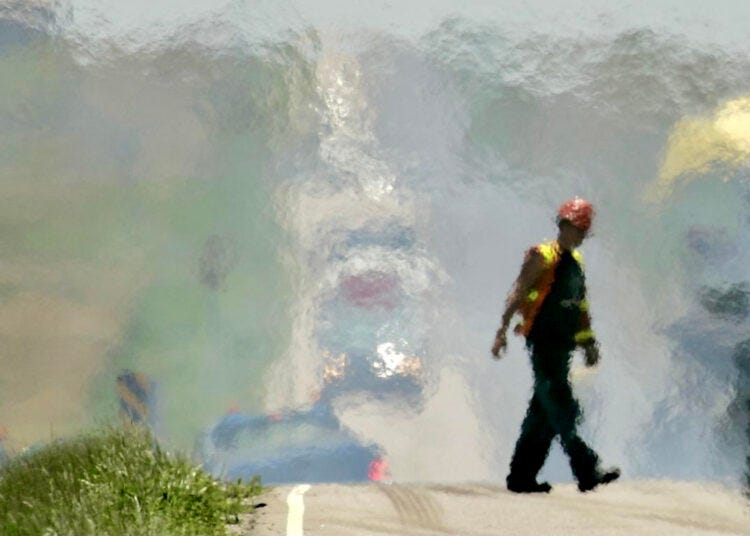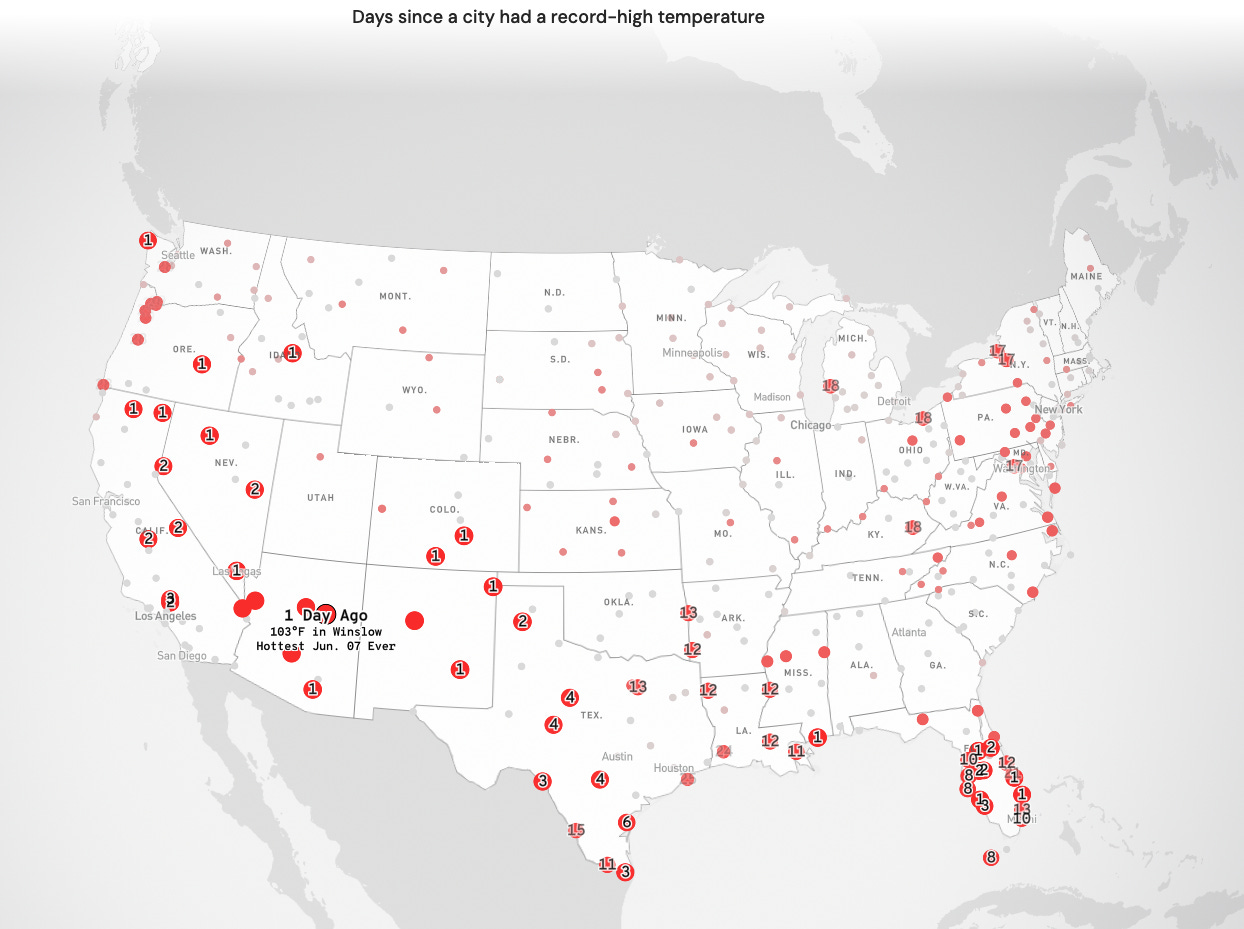Climate Tucson: Walking the Talk with a 'Heat Action Roadmap'
Council's unanimous vote ushers in first phase of building a climate-resilient city
Tucson isn't just walking the talk about confronting excessive heat; it’s got a roadmap.
Four years after making history with its declaration of a climate emergency — one of the first American cities to act on what was then a still-looming and controversial threat — Tucson’s mayor and six-member council this past Tuesday voted 7-0 to adopt the City’s "Heat Action Roadmap."
The 68-page directive is the first offensive in the City’s battle against the increasing, often brutal heat rising from an ever-warming planet, and it's not hyperbole or a case of the “sky is falling” hysteria that’s driving the council.
Tucson's average daily temperature is 4.5 degrees F higher than it was in 1970, "a greater increase than in most other American cities," according to Climate Central. And like all metropolitan areas, our town is being braised on all sides by the combination of climate change-induced heat and the residual heat baked into pavement, concrete, gravel, backyards covered in rocks and pebbles, blocks and blocks of buildings — the natural and man-made elements that make up the urban heat island.
No one missed the irony that the council’s vote on the roadmap fell on June 4, the day leading up to the first heatwave of the season. “We’re seeing it right in front of us,” said Councilman Kevin Dahl. The way things are heating up, he added, the “road” part of the equation could become a “superhighway.”
Developed over the past 90 days by the City's Climate Action team led by Chief Resiliency Officer Fatima Luna, the roadmap is the result of ongoing workshops, conversations and surveys with the community at large, climate and justice organizations, nonprofits, faith-based and labor organizations, environmentalists, University of Arizona, Pima College, TUSD, Pima County, the city itself. And more. Luna estimates participants numbered 250.
Not unlike the Biden Administration, which embedded climate into federal departments in a “whole of government” approach to greenhouse gas mitigation, the City called on its own departments to help shape the document as a whole. Tucson has pledged to be carbon neutral by 2030.
Outdoor Workers Are the First to Get Heat Relief
The roadmap includes three goals and 61 “actionable” items, two of which were adopted by the council at the June 4 meeting. Ordinance 12100 requires any business contracting with the City to have hazard mitigation plans in place for their outdoor workers “to prevent heat-related illness and injuries.”
The second is similar: a Heat Protection Administrative Directive (AD) for outdoor workers employed by the City.
Tucson Isn’t a Johnny-Come-Lately to the Climate Crisis
As the name implies, the roadmap is a guide to accomplishing known steps on the unknown journey to resilience made more complex because it is situation that’s never yet been experienced. Ladd Keith, urban planning specialist at the university and an advisor to the City on heat issues, says that at this point “the folks who are planning for heat are trying to plan for worst-case scenarios."
The City’s heat-hardened arsenal for the future — such as disaster-ready and plentiful community resilience centers — are spelled out in the expansive Climate Action and Adaptation Plan (CAAP), released January 2023 and titled “Tucson Resilient Together.”
"The roadmap is the first step in enacting Tucson Resilient Together,” said Mayor Romero at the council meeting, adding that the lead-off step is to address “those who are hit first and worst,” the City’s most threatened communities and the unhoused.
Last year Pima County recorded 173 heat deaths, 60% died outdoors and 78% of those were males, in both cases “probably [made up of'] workers and the unsheltered,” said Romero, adding that with the right protections their deaths would have been “highly preventable.”
Tackling Heat Safety in Three Ways
The roadmap identifies three immediate goals.
1) For the public, creating heat awareness, safety and preparedness through communication and campaigns; outdoor worker safety, as addressed June 4; and forming a heat advisory committee on resilience.
2) Relating to the built environment, reducing indoor discomfort, health dangers and outdoor GHG emissions by encouraging energy audits and efficiency upgrades; upgrades to City cooling centers; and expanding health and safety resources for the unhoused.
3) Overall, integrating heat risk into urban and regional planning; pushing ahead with natural cooling programs like the Tucson Million Trees initiative; and adding trees and canopies to bus stops and other public places where people need shade.
Governing for Heat Relief
City advisor Keith, assistant professor at the UArizona School of Landscape Architecture and Planning, is an expert on heat policies and the causes and effects of the urban heat island. He gives Tucson and the State of Arizona credit for spreading the word about excessive heat and public health — and he’s quick to add that they didn’t do it alone.
“There has been a lot of grassroots work, a lot of neighborhood level work, pushing by nonprofits and advocates for social services, for the cooling centers for the unhoused, for work like that,” said Keith.
Even so, “I think the record-breaking heat last summer pushed Arizona over the edge to truly address” what will be an ongoing health and safety concern.
“Last year was literally the hottest year on record. And Arizona had record high numbers of heat deaths — 50% greater than 2022. Numbering almost 1,000,” said Keith, “more than the number of deaths from car crashes.”
Bringing It Home
The work that Keith did with the City of Tucson’s Climate Action team is part of what he will be doing with interested cities across the country as a lead researcher with the newly formed Center for Heat Resilient Communities.
Announced in May, the center is a partnership between NOAA and the US Department of Commerce, joining with UCLA, UArizona and ASU, and funded by the Inflation Reduction Act (IRA). The goal is to lay the groundwork for establishing a “heat governance” system of policies, standards and guidelines to create heat-resilient communities across the US.
“We're going to turn a lot of research that's been done and a lot of the best practices into a framework,” said Keith, “and then we'll lead a cohort of 30 communities through this process."
A Tucson native, Keith said he was joking with City colleagues "that I want every city to have the best action plan that it could possibly have."
But in the same breath admits to having "a certain amount of hometown pride if Tucson becomes, like, the best of the best that we can make it.”
Resources
Check out how much climate change influences Tucson’s temperature on any given day through Climate Central’s Climate Shift Index








